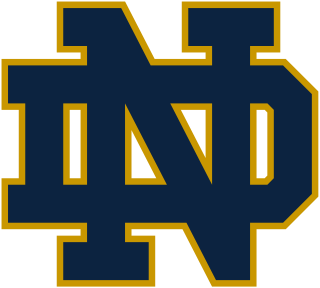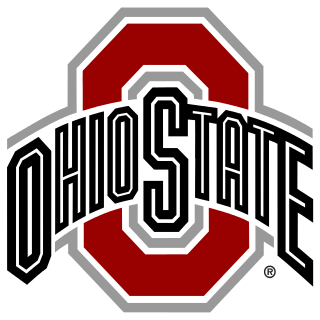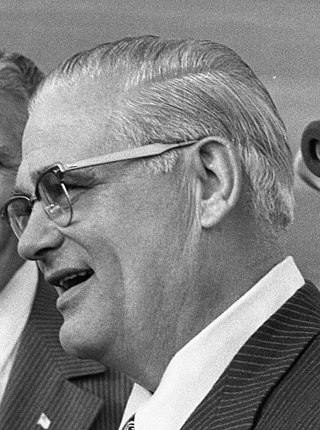Pre-game buildup
Michigan and Ohio State first faced each other in 1897, and have met annually since 1918. Coming into the game, Michigan held the all-time lead in the series 57–39–6, though Ohio State had won the previous two meetings. Called simply "The Game" by some, the rivalry is considered one of the greatest in American sports. [6] [7] [8] [9] The rivalry was specifically intense during a period known as the Ten Year War from 1969 to 1978 when Woody Hayes of Ohio State and Bo Schembechler of Michigan coached opposing teams. Schembechler died at the age of 77 on the eve of the game. This would be the first time since 1973 that both teams came into the rivalry game undefeated. [10]
At the beginning of the season, both teams were ranked in the top fifteen. [11] Following a victory over the then-second-ranked Texas on September 9, the Buckeyes' top rank was cemented. Michigan's victory over the then-second-ranked Notre Dame the following week on September 16, would bring them into the top ten at No. 6 in the AP poll. Both teams would go on to win their remaining games and enter the rivalry with Michigan, ranked No. 2 in the BCS standings, while Ohio State was ranked No. 1. This would be the first time in the BCS-era that the top-two-ranked teams would play each other in the regular season. Due to the No. 1 vs. No. 2 rankings from the conference rivals and the hype that led up to the matchup, the game was referred to as the "Game of the Century." [5] [12] [13]
Michigan

In the preseason polls, Michigan opened the 2006 season ranked No. 14 in the AP Poll, while being ranked No. 15 in the Coaches' Poll. [11] The Wolverines' opened the season against the Vanderbilt Commodores and defeated them 27–7. [14] Following a 41–17 victory over Central Michigan, the No. 11 Wolverines traveled to Notre Dame Stadium to play the No. 2 Fighting Irish. [15] [16] Following a dominating performance on offense and defense, which included three interceptions of Irish quarterback Brady Quinn, the Wolverines defeated Notre Dame 47–21 and moved to No. 6 in the polls the following week. [17] Michigan opened their conference schedule defeating the Wisconsin Badgers 27–13, and the Minnesota Golden Gophers in the Little Brown Jug game. [18] [19]
Michigan remained consistent at No. 6 in the polls and defeated their in-state rival Michigan State 31–13, holding the Spartans to just 60 rushing yards, while they themselves ran the ball for 211 yards. [20] Following the victory, Michigan moved up to No. 4 in the AP Poll and No. 5 in the Coaches' Poll. [21] The Wolverines then traveled to Beaver Stadium and defeated Penn State 17–10, moving up to No. 2 in the AP Poll and No. 3 in the Coaches'. [22] [23] After a 20–6 victory over Iowa and a 17–3 victory over Northwestern, the Wolverines moved to No. 2 in all major polls. [24] [25] [26] Although a closer game than expected, Michigan finished off their non-conference schedule with a 34–26 victory over Ball State. [27] Michigan's 34–3 win over Indiana would bring them to 11–0 on the season and keep them ranked No. 2 in all major polls. [28] [29] On November 17, former Michigan coach Bo Schembechler collapsed and was taken to the hospital, where he was later pronounced dead. [30] Schembechler's death happened just one day before one of the biggest games in the rivalry, though he had not planned on attending the game. [31]
Coming into the game with Ohio State, the Wolverines ranked twelfth in the nation in rushing offense, led by Mike Hart who had 1,373 yards and 11 touchdowns. [32] Michigan quarterback Chad Henne compiled 1,932 passing yards, 18 touchdowns and seven interceptions, with Mario Manningham, Steve Breaston and Adrian Arrington leading the team in receptions. [32] The Michigan defense ranked third in the nation, allowing only 231.4 yard per game, while also having the best rush defense, holding opponents to only 29.9 rushing yards per game and giving up only three rushing touchdowns. [32]
Ohio State

In the preseason polls, Ohio State opened the 2006 season as the No. 1 ranked team in both the AP and Coaches' Poll. [11] The Buckeyes' opened their season by defeating the Northern Illinois Huskies 35–12. [33] Ohio State traveled to Darrell K Royal–Texas Memorial Stadium to play the second game of a home-and-home series with Texas, following a 25–22 defeat in Columbus, Ohio in 2005. Ohio State defeated the then-second-ranked Longhorns 24–7, remaining the No. 1 team in all major college football polls. [16] [34] Ohio State defeated the Cincinnati Bearcats 37–7 the following week, with Troy Smith throwing for 203 yards and two touchdowns. [35]
Ohio State faced the No. 24 Penn State Nittany Lions in Columbus and defeated them 28–6 after scoring three touchdowns in the fourth quarter. The Buckeyes defeated the No. 13 Iowa Hawkeyes the following week 38–17 in Kinnick Stadium. Ohio State finished their non-conference schedule defeating Bowling Green 35–7 and then defeated Michigan State the next week in Spartan Stadium 38–7, with the Buckeyes defense controlling much of the game. Blowout victories over Indiana and Minnesota would be followed by a 17–10 victory over Illinois for the Illibuck trophy. A 54–10 victory over Northwestern the following week gave the Buckeyes an 11–0 record heading into the rivalry game, with their ranking remaining consistent at No. 1 in all major polls. [29]
Quarterback Troy Smith entered the game against Michigan with 2,191 passing yards and 26 touchdown passes, while also leading the Heisman Trophy debate. [32] Ted Ginn Jr. and Anthony Gonzalez led the Buckeyes in receiving yards with 677 and 673 yards, respectively. [32] The Buckeyes rush defense had given up only 90.2 yards per games and three touchdowns, while they were tied for first in the nation with 21 interceptions. [32] James Laurinaitis and Malcolm Jenkins led the team with five and four respectively. [32]












